Doom Eternal Review
Proving that even Hell on Earth can be overcooked
The Doom game that released four years ago was a simple first person shooter. It was faithful to the series and did not bother with much story. Its biggest fault was some late-game repetition, but that wasn’t enough to negate the many things it did right. Doom Eternal is not as straightforward. It actually turns the series into a chaotic resource manager with unappealing platforming peppered between an endless stream of combat arenas. It also suffers from similar repetition problems and features a rather boring multiplayer, all making for a shooter that stumbles too often.
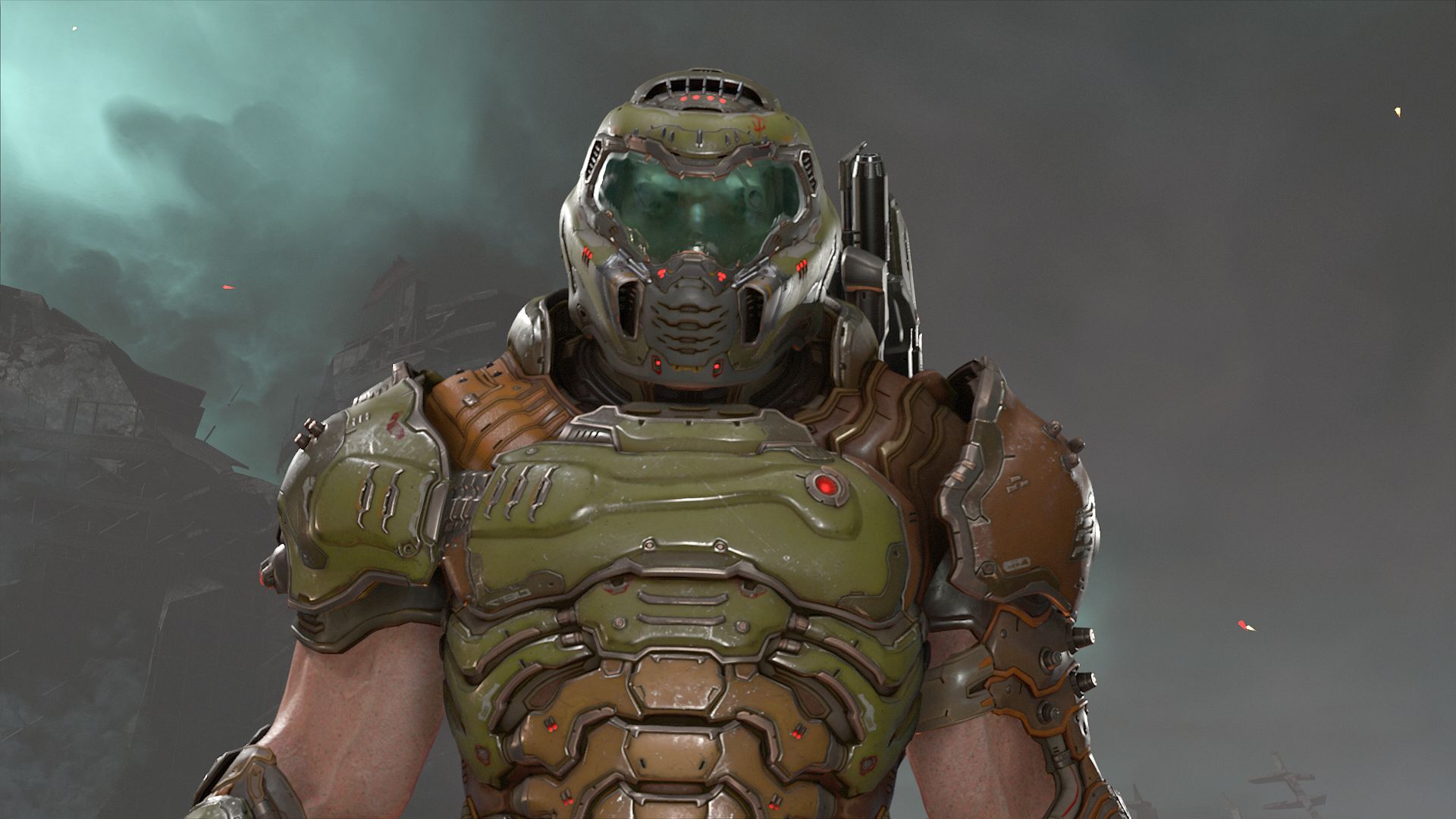
Time for more demon killing
Doom Eternal has more story than its predecessor, although it is best avoided wherever humanly possible. Cutscenes can, and should, be skipped because they feature awful dialogue and silly direction in both first and third-person. The optional codex notes have plenty of obscure nouns but are less interesting than a foreign dictionary. None of the story gains traction because there are no substantial character arcs; one character you meet in Hell for a few seconds, and he’s never seen again. What the story does do is cover the origins of the Slayer (aka Doomguy, aka you) and it almost gets cohesive when it tries to explain why the Slayer desires to decimate demons so diligently. But this falls on deaf ears and is vague enough that it could easily be retconned when a real story comes along. The Slayer’s overarching goal is to kill three Hell priests to rid the Earth of demons, and the rest is just noise.
After the first level, you are dropped into the Fortress of Doom, a floating castle orbiting a smoldering Earth. Most people on Earth have been killed and how, or why, you got the keys to this space Fortress is never explained. The Fortress is a staging area to launch missions via a portal and a place to browse through the enumerable collectibles you find during missions. The music tracks you find, from id Software’s old games, are great and they can be played while exploring the Fortress. It is also nice to have a place to practice combat in the castle’s dungeon. Oh and the Fortress also has weapon and suit upgrades, if you find enough batteries to unlock the sealed doors. If this game were attempting to be an RPG then various rescued people from Earth might wander the curved staircases and call the bland interiors home. But this is not that type of game—the few humans you meet are ignored. The Slayer is here to rip and tear, not care.
And so it is fortunate that most of the actual gameplay, particularly the shooting and the maiming, is great fun. The demons look brutal, including new types like the Marauder—he requires a non-traditional approach more akin to a Dark Souls enemy. There are more glory kill animations for the lesser demons and plenty of blood and guts on display; it’s a pity, again, that gore is quick to vanish, but probably for the best given that the Mancubus’s gaping ribcage tends to block passages. In general, the game has more enemy variety and this provides a refreshing starting point.
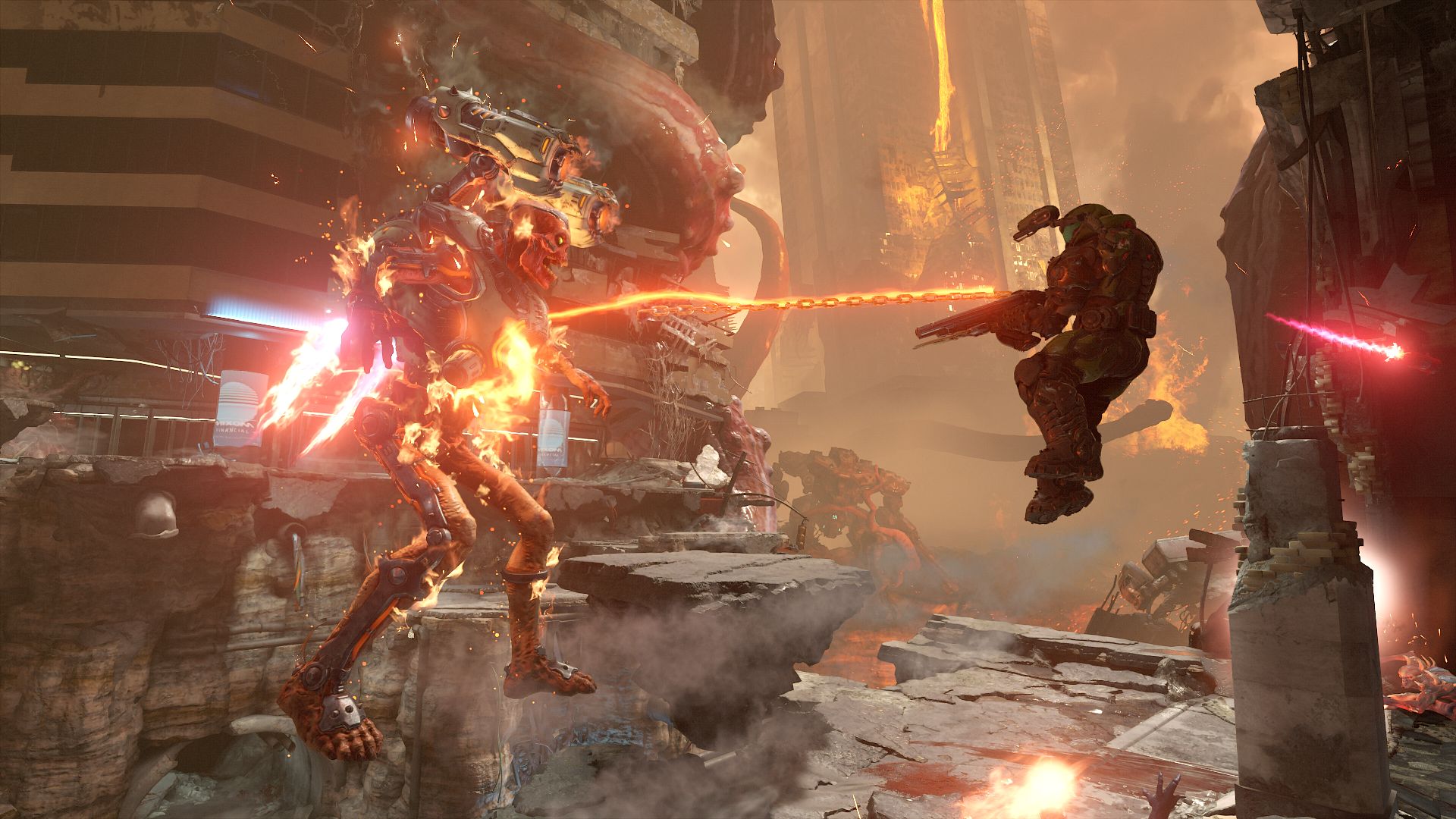
The Super Shotgun does not disappoint
The Slayer’s arsenal is familiar and gradually released into the player’s hands. Many of the returning weapons are better this time around, due to tweaks to secondary fire modes and general balance adjustments. The Super Shotgun is still glorious and using the new grapple to get up close with any demon is superb fun. The Plasma Rifle looks like the one from the original Doom and can explode shields, and the Chaingun can now deploy a shield while you unleash fury. The weapons look good, they sound good, and most importantly, they kill good.
Unfortunately the ammo reserves are pitiful, especially at the beginning. Unlocking all ammo upgrades will bring this up to tolerable levels but the resource pools are still far below those found in the 2016 game. What this leads to is a lot of weapon switching and scrambling around looking for ammo drops in the heat of combat. There is some ammo to be found, but maybe not enough to use the Heavy Cannon’s precision bolt to take down an Arachnotron’s tail weak point. Later parts of the game have even less ammo lying around. There is a reason for the lack of resources: players are trained to use the recharging chainsaw because it rends fodder demons into a colorful fountain of ammo. In later parts of the game, the lesser demons can be ignored until it is time to restock—good thing they respawn.
It’s not just about managing ammo during battle; health and armor are also resources that you need to keep an eye on. Health can be acquired by performing glory kills on staggered enemies. Armor is dropped by demons that are on fire from your shoulder-mounted flamethrower, and like the chainsaw, it recharges. But wait, there’s more. Grenades recharge and can either blow up or freeze enemies. A special melee attack, called the blood punch, can be deployed to kill groups for some breathing space. There is even a sword that instantly kills tough demons, and the recharges for it are scattered around the levels like glowing powerups.
What this all means is that there is a lot of things to keep track of in combat, which is already hectic enough given the pace and number of enemies. Battles force players to top up their own resources in real-time, less or more so depending on aptitude and fortitude. Obviously difficulty plays a part, but even on Hurt Me Plenty, the chainsaw is needed often. If you can get used to the idea of deploying the chainsaw, like you might press reload in other shooters, then there is some great combat behind it all. Combat can be sustained in perpetuity and the onus is on the player to stay alive and stocked. Unfortunately all this resource malarkey makes the combat more repetitive because so many basic actions are repeated in just one combat encounter.
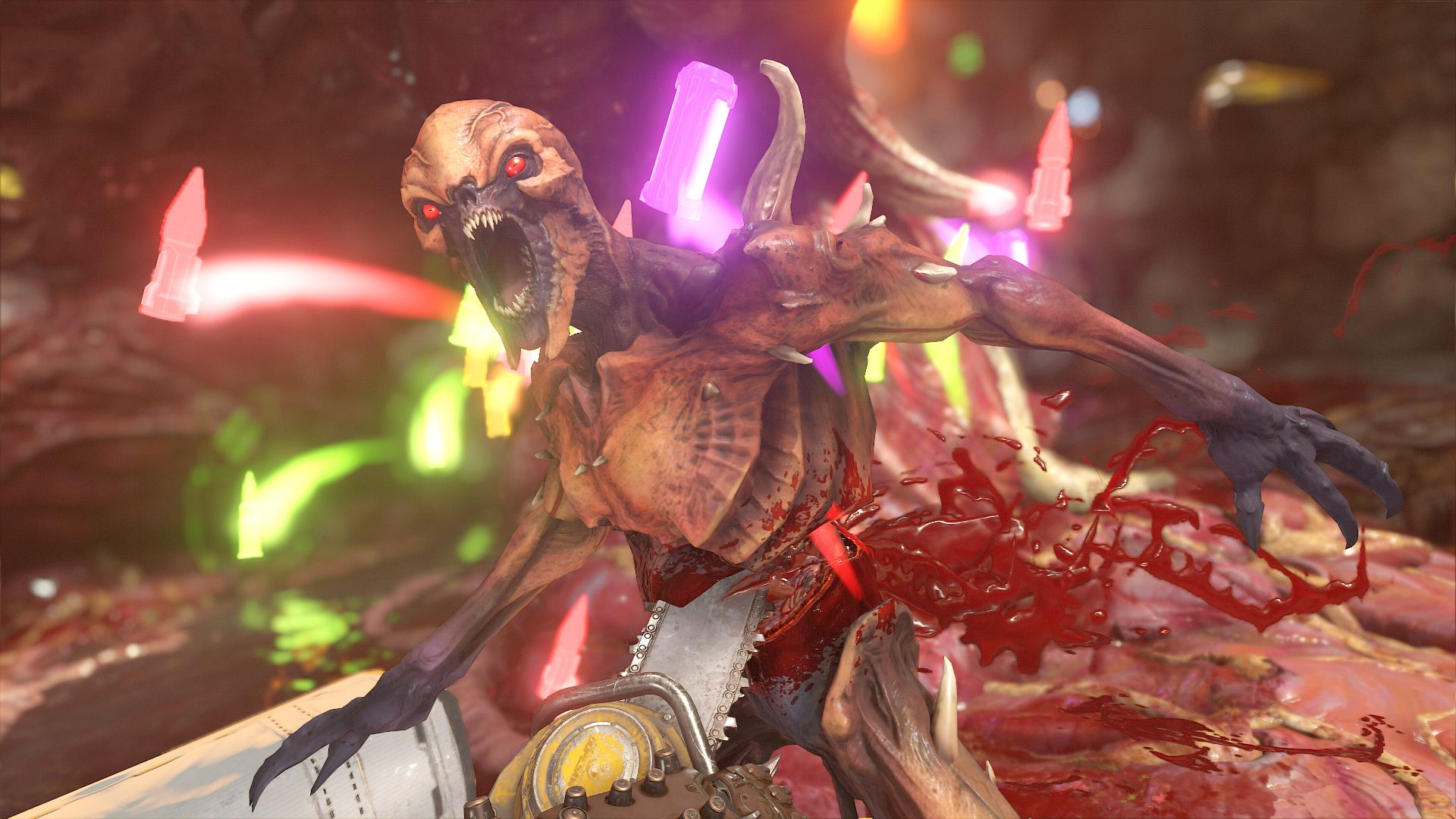
Get used to this sight, it's the main way to get ammo
Most of the action occurs in dedicated arenas where you must kill a stream of foes, for a few minutes, before a magical door opens. Jump pads are all around the place, and new ‘monkey bars’ let the Slayer swing about to gain height. So the action is more nimble, aided further with a recharging (yes another one) dash ability and double jump. There is lots of movement and shooting midair, which is cool. On the downside, many of battle arenas look out of place because they’re more like The Longest Yard, from Quake 3 Arena, meets DM-Morpheus, from Unreal Tournament. They are not like a traditional linear single player shooter and are more like white-box combat zones. It gets less arcadey towards the end, but the levels get more cramped to counter this, putting pressure on the player to avoid body-blocking demons that mosey up when you’re chainsawing another Imp for the twentieth time.
In combat, Eternal only has one pace: unrelenting. Combat arena after combat arena tells the same story. You enter an area, fight off creatures that seem to spawn in continually, and then maybe wait for the game to rip the camera away to show you the only door opening. The combat gets more laborious near the end because of how close these arenas are jammed together. Despite all the shooting, progress is slow because every few steps it is time to dance with more demons. And the encounters that are placed nearby often feature similar enemy compositions, so there are few surprises across the fourteen hours. Even looking at the great 3D map, to navigate levels and find collectibles, starts to cause anxiety because all upcoming combat encounters are visible and waiting.
When there are big gaps between the marked combat, it likely means that platforming is required. These bits are awful. They require the Slayer to double-jump, double-dash, and collect dash recharges mid-air to leap over large chasms. Some walls are climbable and the monkey bars are either used to loop around a cliff face or mantle to a higher ledge. Whenever it seemed unclear where to go, it was because of platforming, not the colored keys of yore. These bits have more arcade nuances, like platforms that fall upon touching them and rotating fire-poles straight from Bowser’s castle. It’s clunky and imprecise at the best of times, with irregular jump distances and obscure paths. That ledge on the side of a cliff is actually covered by an invisible wall. That ramp that looks like it might provide better access to a higher spot is actually an instant-death zone. Falling to your death is not a checkpoint restart (no quick saves here); you just lose health and are resurrected on a ledge. Great in theory, but it means you start the next combat encounter with less health and must get busy collecting resources before you can let it rip.
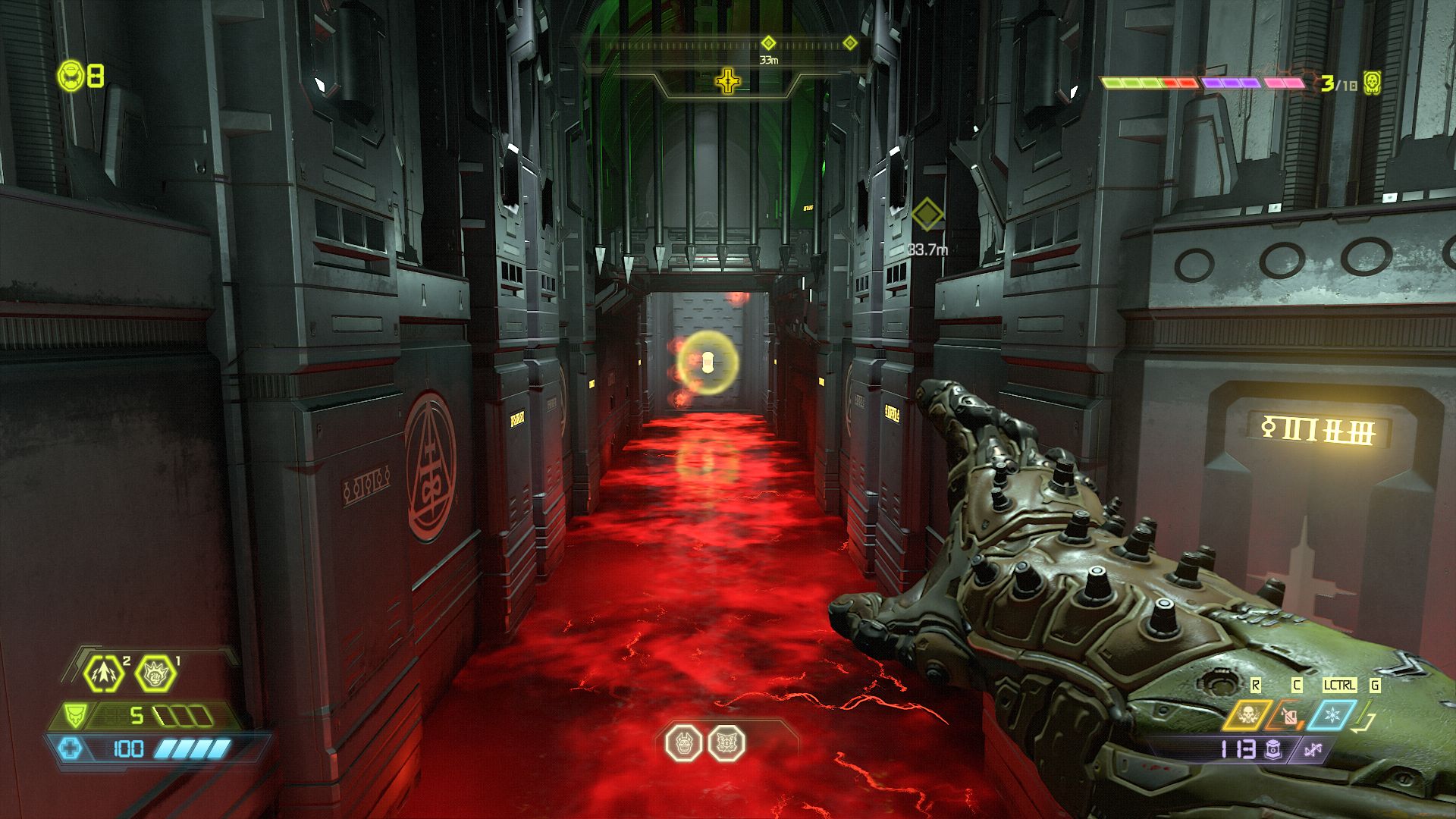
Yay, more platforming, said nobody ever
So the campaign has two pacing states, one at each end of the scale. The intense combat gets tiring and repetitive, as so many things are happening, but the resource management gives no room to fully appreciate it. And the boring platforming stalls everything to a halt and is out of place when put alongside the hyperactive shooting. There is no middle ground, no ebb and flow that many older shooters relied upon, and so the campaign is like a rollercoaster with 90 degree inclines.
Multiplayer is no less intense for the Slayer, although it is strange that, given the arcade trappings in the campaign, it forgoes traditional deathmatch for asymmetrical combat. Two playable demons face off against one Slayer in the online Battlemode, which is the best of five rounds. The action takes place on small maps (six in total) and the players can choose one of six demons, from the jetpack-assisted Revenant to the firewall-producing Archvile. All demons can spawn AI-controlled enemies regularly. It sounds like the odds are against the Slayer but it is more balanced than you might think. The Slayer has a lot of firepower and good agility, able to use bounce pads and teleporters, and those AI demons can be used to replenish resources.
All the Slayer has to do is kill both player demons in a short timeframe. Leave one alive for too long and the other respawns, so the last demon might choose to flee and hide. The best online matches feature some demon respawning as both sides wrestle for control. The Slayer tries to stay healthy and stocked while eating into demon health whenever the opportunity arises. Demons can block the Slayer by placing AI fodder in his path or denying resources with a special skill. Some demons can create a healing zone or damage zone, adding a bit of cooperation. Newbie Slayers get dominated easily but good Slayers are hard to stop. In any case, most rounds only last a minute or less. This is not a lot of actual game time when you include pre-round setup and selecting upgrades between rounds.
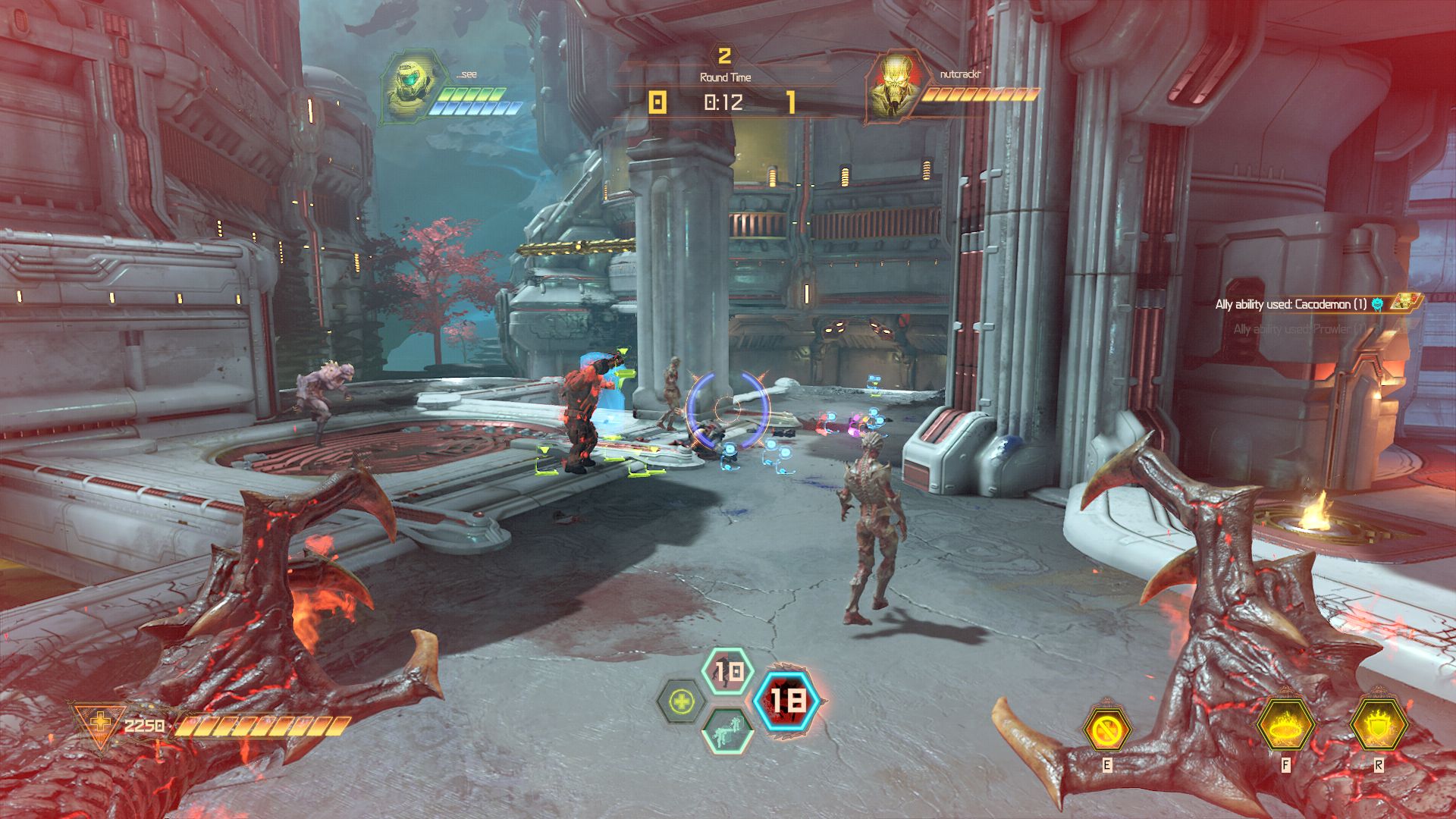
The multiplayer has reasonable asymmetry but is ultimately quite bland
Despite the interesting balance, the multiplayer is not that fun or great on a technical level. It gets boring after just a few dozen matches, especially after playing all the demons. The amount of lag during games was noticeable and frequent; AI-controlled demons attacked the ground far away from the Slayer and yet they caused damage. Body-blocking is even more of an issue because AI demons move inconsistently from their campaign counterparts. Players on both sides exhibited jittery movement and warping. Matchmaking has problems too, closing down lobbies with two players ready to go and sometimes not finding any games at all. It seems unlikely that Battlemode will retain a strong community, yet with only three players required, private matches do not take much effort.
While the multiplayer has issues, the game looks awesome and runs excellent. Framerate is consistent and high, no matter what action is taking place on screen. Visual design has gone up a notch, with more contrast and color. It has a similar palette and style to the Darksiders series. Some levels have excellent backdrops and interesting designs, particularly those featuring a twisted Earth like in the Super Gore Nest mission. The textures are still blurry up close but you are rarely standing still to see them. Music is more than up to the challenge to match the insane combat. It is high intensity and high tempo with heavy reverberation. The style is quite distinct in that it sounds like the music is grinding away as you churn through foes. Music transitions are smooth when going in and out of combat. On top of that, various audio sounds vital for gameplay, like beeps for recharging abilities, are well implemented.
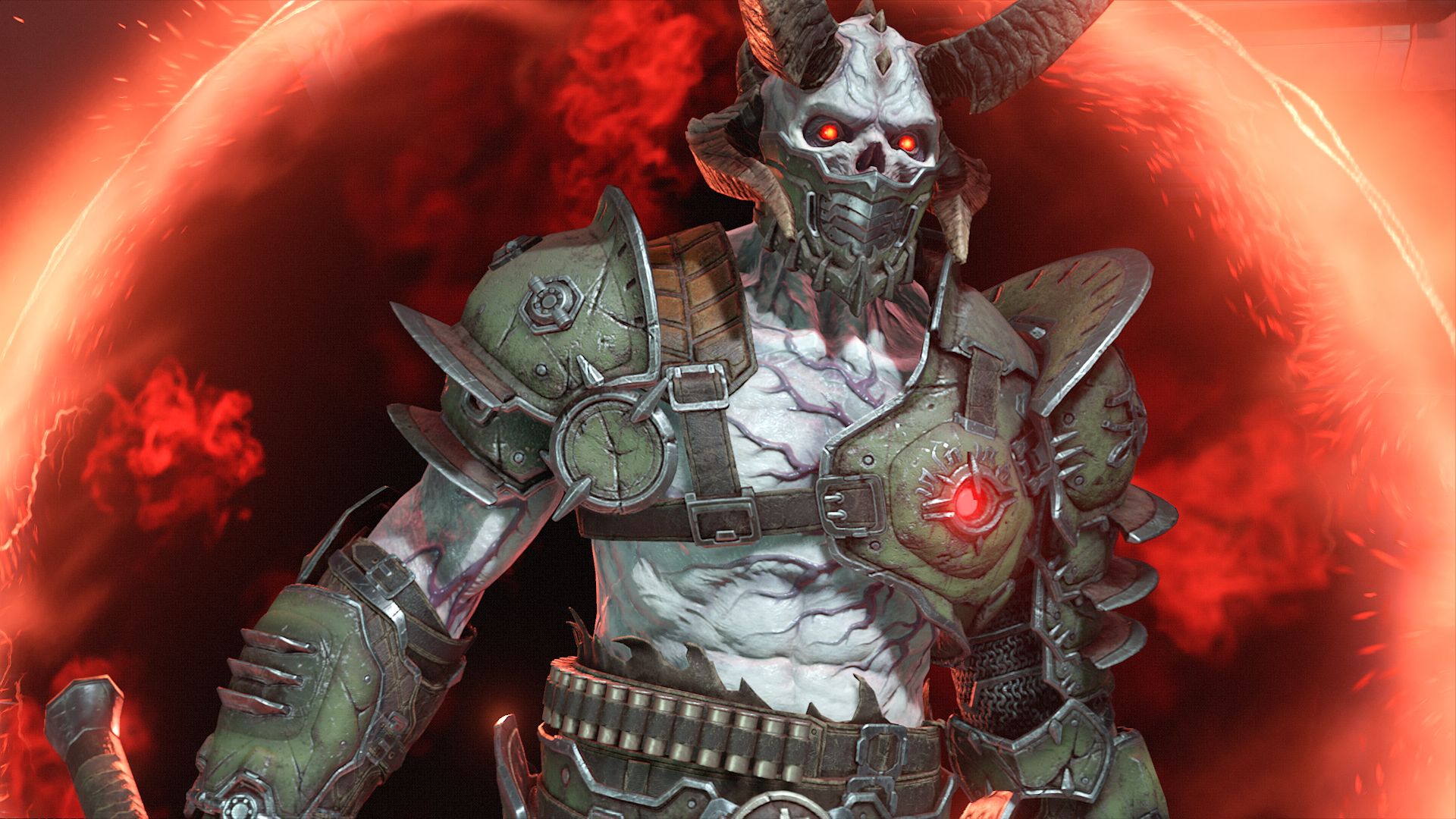
If only they put a muzzle on repetition
Despite the wonderful sights and sounds, Doom Eternal is dissimilar from its predecessor because it overcomplicates the basics and squelches variety behind unnecessary replication. The raw shooting is empowering, with excellent weapons and cool demons that are fun to eviscerate. But the action forces the player to maintain their own resources, which can be liberating, by offering an endless battle, just as it can be exhausting and tedious. Similar encounters are crammed into levels with no scaling back from extreme hyperactivity. In between some battles are clunky platforming segments that add nothing. And the multiplayer is bland and glitchy, despite the intriguingly balanced asymmetry. Doom Eternal has some great qualities, but they’re hidden under unnecessary clutter and repetition, and it is a step down from its forebears.
 Comments
Comments


















